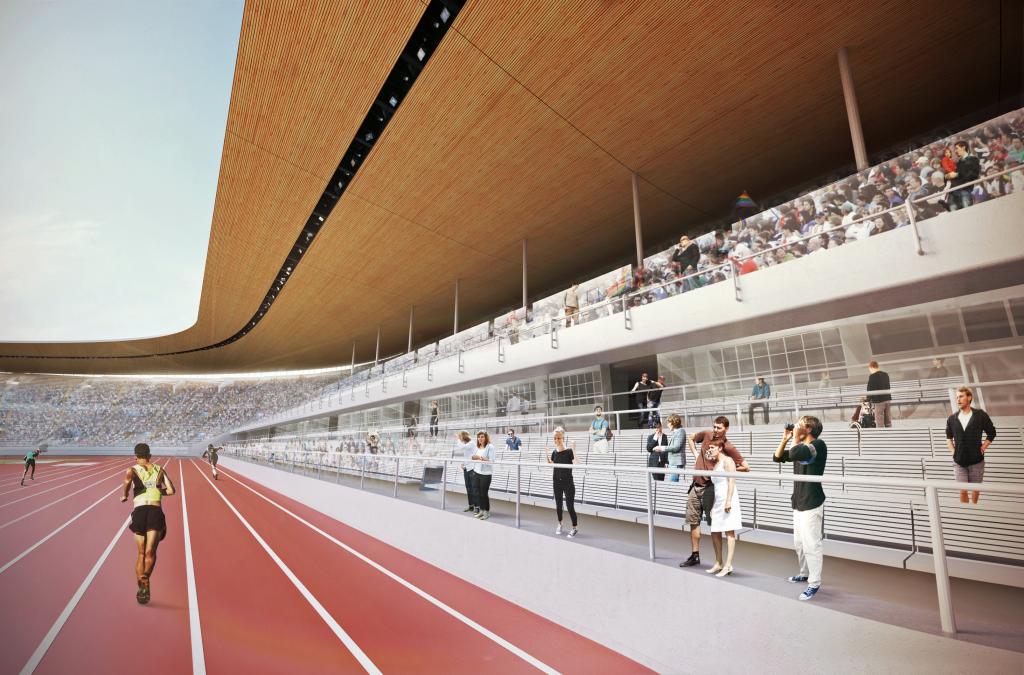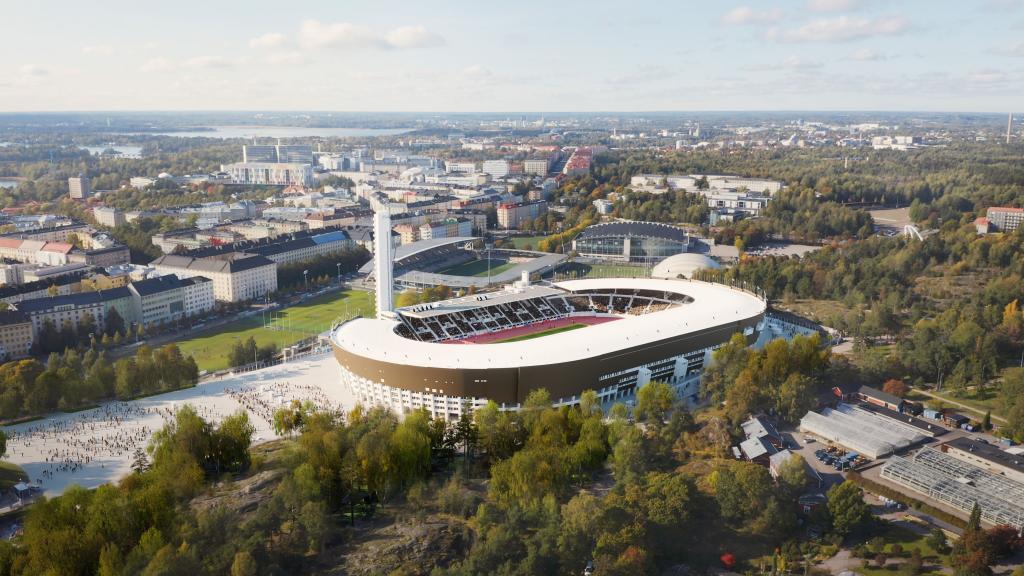ENVIRONMENTALLY FRIENDLY OLYMPIC STADIUM OPENS IN 2020
A focus on responsibility in modernisation makes the updated Olympic Stadium a showcase for sustainable development and a premier venue for putting on events in an environmentally conscious manner.
The Olympic Stadium is an arena of sustainable development and the circular economy in the built environment. The circular economy reduces the need for virgin raw materials and cuts back on greenhouse gas emissions. The Olympic Stadium turns words into deeds in its comprehensive implementation of a circular-economy approach.
In order to learn more about responsibility, back in 2013 the Stadium Foundation that is in charge of the upkeep and maintenance of the Olympic Stadium joined EcoCompass, a practically oriented environmental management system with a focus on tangible actions developed jointly by the cities of Helsinki, Espoo and Vantaa.
The EcoCompass project provided Stadium staff with a wealth of ideas on how to reduce the environmental impacts of events and the environmental load arising from the work carried out at the Stadium.
Environmental impact reduction by extending the building’s life cycle was one of the fundamental premises for the whole modernisation and updating of the Helsinki Olympic Stadium.
The updated Helsinki Olympic Stadium is an environmentally friendly event venue for a new era.
The indoor and outdoor tracks of the Stadium are finished in Mondo sports flooring with natural rubber, 30–38% of which is recycled. The plant where the flooring is manufactured moreover uses solar energy. In pitch heating, the Stadium has switched from electrical heating to environmentally friendly district heating, and the pitch has been divided into six distinct heating sectors. Each sector contains temperature and humidity sensors that allow real-time monitoring of whether sunlight alone provides sufficient heat. If so, additional heating is unnecessary and may be turned off.
The benches of the updated Stadium are made of a durable composite of recycled wood and plastic that is a product of Finnish engineering excellence.
Grown in Finland, the grass of the natural-turf pitch could be delivered on site in an environmentally conscious manner. For the most part, biological fertilisers were used in growing the grass for the turf, and these are also the product of choice in its upkeep. The turf will be mowed, brushed and aerated using biodiesel-powered lawn mowers and other machinery.
Waste collection and reducing waste loads have been an area of emphasis in the rebuilding of the Olympic Stadium. The Stadium’s underground waste station is capable of handling eight different types of waste.
The multiple information screens placed around the Stadium help cut back on paper waste. New tools and measures to reduce food waste as well are being studied in collaboration with the Stadium’s food services provider.



























